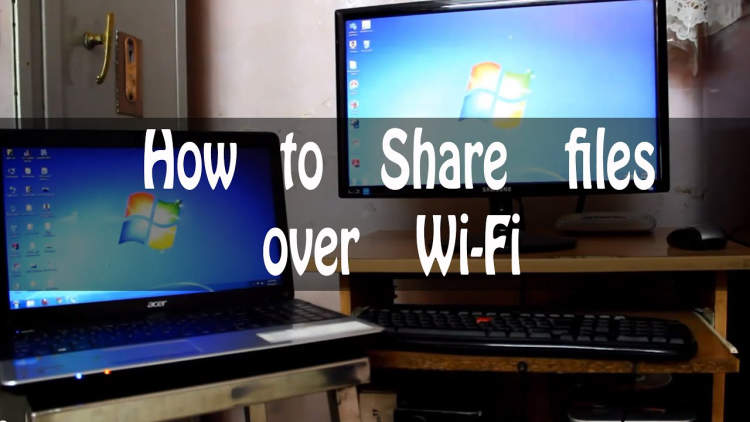In today’s digital age, the ability to share files and folders on your laptop is essential for collaboration and convenience. Whether you need to send important documents to a colleague or share vacation photos with friends and family, knowing how to navigate file sharing is a skill that everyone should possess. In this article, we will guide you through the step-by-step process of sharing files and folders on your laptop, ensuring that you can effortlessly exchange data and information with ease.
Firstly, let’s explore the different methods available for sharing files and folders on your laptop. One of the easiest and most common ways is through email attachments. By attaching a file or folder to an email, you can send it directly to the intended recipient. Additionally, many email services offer the option to compress files, making transferring large files quicker and more efficient.
Setting up file sharing on your laptop
If you want to share files and folders on your laptop with others, it’s essential to set up file sharing correctly. By following these steps, you can easily enable file sharing and start collaborating with your friends, colleagues, or family members.
Step 1: Check your network settings
Before you begin sharing files, ensure that your laptop is connected to the same network as the devices you want to share files with. This can be a local network, a home Wi-Fi network, or even an office network.
Step 2: Enable file and printer sharing
On your laptop, go to the Control Panel and open the Network and Sharing Center. From there, click on “Change advanced sharing settings” and make sure that the “File and printer sharing” option is enabled. This will allow other devices on the network to access shared files and folders on your laptop.
Select the folders you want to share with others. Right-click on the folder, go to the “Properties” option, and click on the “Sharing” tab. Choose “Advanced sharing” and check the box that says “Share this folder.” You can also set permissions for specific users or groups if needed.
Step 4: Set up password protection (optional)
If you want to add an extra layer of security, you can set up a password for accessing your shared folders. This way, only authorized users will be able to access the shared files on your laptop.
Once you have set up file sharing on your laptop, other devices on the same network can access the shared folders. You can share files with them, copy files from their devices, or even collaborate on shared documents.
Step 6: Troubleshooting tips
If you encounter any issues while setting up file sharing or accessing shared files, make sure that all devices are connected to the same network and that file sharing is enabled on both your laptop and the other devices. You may also need to check firewall settings or contact your network administrator for further assistance.
Conclusion
Setting up file sharing on your laptop allows you to easily share and collaborate on files with others. By following these simple steps, you can enable file sharing and enjoy seamless file transfer and collaboration.
Sharing Individual Files on Your Laptop

If you need to share specific files with others or transfer them between devices, here are several methods to share individual files on your laptop:
1. Email
Easily share individual files by attaching them to an email and sending them to the recipient. Most email providers allow attachments up to a certain size.
2. Cloud Storage
Upload the file to a cloud storage service such as Google Drive, Dropbox, or OneDrive. You can then generate a link to the file and share it with others.
3. File Sharing Apps
Utilize file sharing apps like AirDrop (for Mac), Shareit, or Xender to share files wirelessly between devices. These apps utilize Wi-Fi or Bluetooth connections to transfer files quickly.
4. USB Flash Drives
If you need to physically transfer files, you can save them on a USB flash drive and plug it into another device.
5. Network Sharing
Set up network sharing on your laptop to allow other devices connected to the same network to access specific files. This method is ideal for sharing files with multiple users.
Sharing folders and multiple files on your laptop
Sharing files and folders on your laptop allows you to easily collaborate and transfer data between multiple users. Whether you’re working on a project with colleagues, sharing photos with friends, or transferring important documents between devices, here’s a guide on how to share files and folders on your laptop.
1. Windows
If you are using a Windows laptop, follow these steps to share files and folders:
- Right-click on the file or folder you want to share.
- Click on “Properties” and navigate to the “Sharing” tab.
- Click on “Advanced Sharing” and check the box that says “Share this folder”.
- You can set specific permissions for different users by clicking on “Permissions”.
- Click “OK” to save the changes.
2. macOS
For macOS users, here’s how you can share files and folders:
- Open the “System Preferences” from the Apple menu.
- Click on “Sharing” and enable the “File Sharing” option.
- Add the desired folders or files you want to share by clicking on the “+” icon.
- You can set specific access permissions for different users by clicking on the “Options” button.
- Click “OK” to save your changes.
3. Cloud Storage Services
Another convenient way to share files and folders on your laptop is by using cloud storage services. Here are some popular options:
With these services, you can create shared folders, invite other users, and easily collaborate on documents.
4. Network Sharing
If your laptop is connected to a local network, you can also share files and folders with other devices on the network. Follow these steps:
- Ensure all devices are connected to the same network.
- On your laptop, right-click on the file or folder you want to share.
- Select “Properties” and navigate to the “Sharing” tab.
- Click on “Share” and choose the devices you want to share with.
- Click “OK” to apply the changes.
By following these methods, you can easily share folders and multiple files on your laptop, allowing for seamless collaboration and data transfer.
Conclusion
Sharing files and folders on a laptop is an essential skill that can greatly improve collaboration and productivity. By following the steps mentioned in this article, users can easily share files and folders with others, whether it’s within a local network or over the internet.
It is important to remember to choose the appropriate sharing method based on the specific requirements and circumstances. For local network sharing, users can utilize built-in sharing features like Homegroup on Windows or AirDrop on macOS. On the other hand, for remote sharing, cloud storage platforms such as Google Drive, Dropbox, or OneDrive are excellent options. Regardless of the chosen method, users should also pay attention to security and privacy settings to ensure that only authorized individuals can access the shared files and folders.

